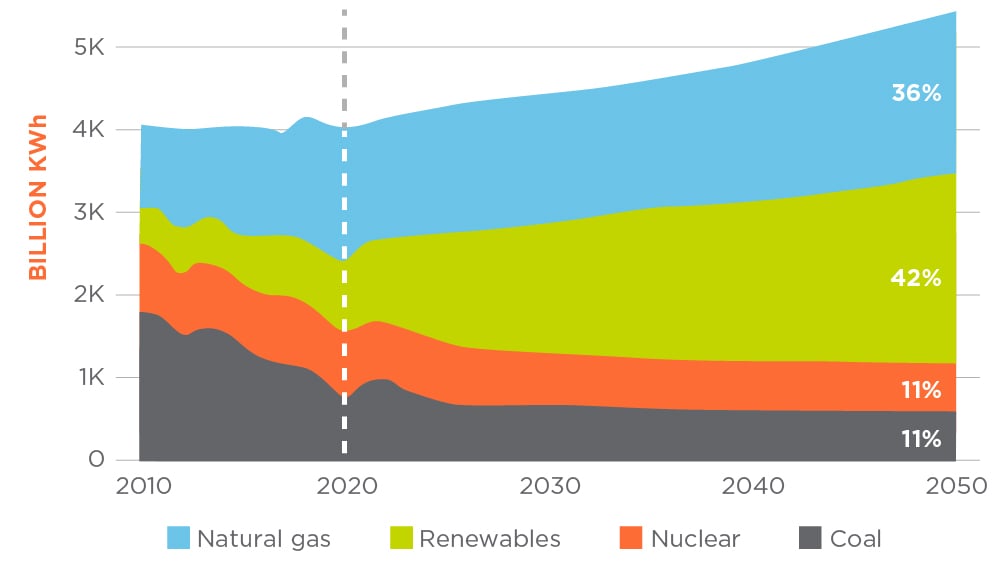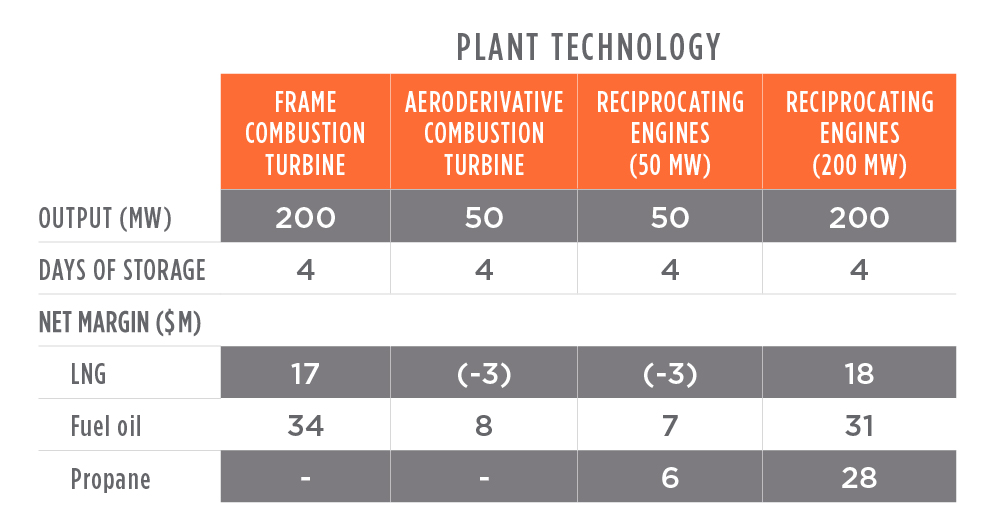There are many configurations of simple‑cycle combustion turbines. For this example, we assumed two technologies: a 50‑megawatt (MW) aeroderivative unit and a 200‑MW frame unit.
Fuel oil
Fuel oil is a proven backup for combustion turbine technologies, whether being used with frame or aeroderivative units. When operating on fuel oil, the turbines will require increased water consumption to maintain compliance with nitrogen oxide (NOx) emission limits. New power plants designed for fuel oil have combustion turbine specifications and equipment to operate as a dual‑fuel unit, along with the ancillary piping, equipment and tanks.
Converting existing natural gas‑fired units to dual‑fuel capability presents increased challenges. Many of the plant components will need to be retrofitted or replaced, specifically the combustion turbine combustors.
Generally, the additional cost associated with a new unit having dual‑fuel capability is approximately $70 to $90/kW. For an existing unit to be retrofitted, costs are approximately 25% greater. Additionally, existing units may not have as much water supply as would be required to operate using fuel oil.
Fuel oil is also typically more costly than natural gas, and it tracks closely with the price of crude oil. Historically it has been between $10 to $15 per million British thermal units (MMBtu). (Compare to pipeline natural gas, which hovers around $3/MMBtu during normal conditions.)
Propane
Propane has historically been evaluated as an opportunity fuel for use in combustion turbines. There’s no consistency among the combustion turbine original equipment manufacturers (OEMs) on their ability to fire utilizing 100% propane fuel, let alone any operating experience. For the OEMs that may have the ability, specialized combustors are required, along with steam injection. Furthermore, if the unit is equipped to operate using propane, steam injection is required for either natural gas operation or propane operation. With this unproven fuel and steam injection requirement, utilizing propane as a firm backup fuel for simple‑cycle combustion turbines currently does not appear feasible.
LNG
LNG provides an opportunity for on‑site storage for both existing and new combustion turbines. The installation of a liquefaction plant on‑site is cost‑prohibitive (costing from $50 million to $100 million). However, installing a fuel unloading system for truck deliveries, storage tanks and vaporizer on‑site is a potential option. The combination of these options would be approximately $15 million to $35 million for 50‑MW and 200‑MW combustion turbine units, respectively. However, LNG liquefaction facilities are quite region‑specific, so depending on the location, long‑haul truck deliveries may be required. Pipeline natural gas costs approximately $3/MMBtu. However, the cost adders associated with liquefaction, delivery and logistics will add approximately $7/MMBtu (including losses), bringing the total delivered cost of LNG to the plant to approximately $10/MMBtu.
Additionally, LNG experiences a boil‑off: A percentage of the LNG is boiled off as gas. This gas can either be released to atmosphere, flared off or (if available) placed into a low‑pressure natural gas system on‑site. The boil‑off equates to approximately 0.1% per day. Therefore, when storing fuel over the course of a year, the overall system would be expected to lose approximately one‑third of its stored fuel. These losses could be pared by only storing fuel over the winter months.









